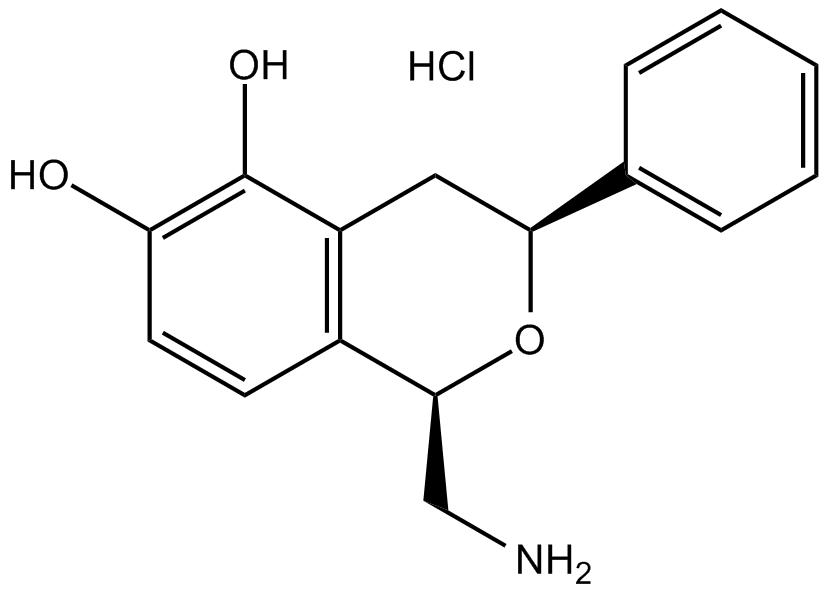A 68930 hydrochloride |
| Catalog No.GC15498 |
Agonist of D1-like dopamine receptor,potent and selective
Products are for research use only. Not for human use. We do not sell to patients.

Cas No.: 130465-39-3
Sample solution is provided at 25 µL, 10mM.
A 68930 hydrochloride is a potent and selective agonist of D1 dopamine receptor with EC50 values of 2.5 and 3920 nM for D1 and D2 receptors, respectively [1].
D1 dopamine receptor is a G-protein couple receptor for dopamine and stimulates adenylate cyclase and cyclic AMP-dependent protein kinases. D1 dopamine receptor plays an important role in behavioral responses and neuronal growth and development.
A 68930 hydrochloride is a potent and selective D1 dopamine receptor agonist. In rats, A 68930 (0.9-15.0 μM) induced hypothermia in a dose-dependent way. Also, A 68930 (0.9-15.0 μM) inhibited locomotor activity in a dose-dependent way [2]. In adult rat, A 68930 (0.0625-4.0 mg/kg) induced grooming, vacuous chewing and sniffing, which were inhibited by SCH 23390, a D1-like receptor antagonist [3]. In chronic unpredictable (CUS) stress rat models, A68930 (0.25 mg/kg) significantly normalized the reduction of the number of tyrosine hydroxylase (TH) immunoreactive neurons in the striatum, ventral tegmental area, medial forebrain bundle and substansia nigra and glucocorticoid receptor (GR) in the cortex, hippocampus and striatum. Also, A68930 normalized the antioxidant enzyme activities, increased glutathione (GSH) and inhibited lipid peroxidation [4].
References:
[1]. Kebabian JW, Briggs C, Britton DR, et al. A68930: a potent and specific agonist for the D-1 dopamine receptor. Am J Hypertens, 1990, 3(6 Pt 2): 40S-42S.
[2]. Salmi P. Independent roles of dopamine D1 and D2/3 receptors in rat thermoregulation. Brain Res, 1998, 781(1-2): 188-193.
[3]. Deveney AM, Waddington JL. Psychopharmacological distinction between novel full-efficacy "D1-like" dopamine receptor agonists. Pharmacol Biochem Behav, 1997, 58(2): 551-558.
[4]. Rasheed N, Ahmad A, Al-Sheeha M, et al. Neuroprotective and anti-stress effect of A68930 in acute and chronic unpredictable stress model in rats. Neurosci Lett, 2011, 504(2): 151-155.
Average Rating: 5 (Based on Reviews and 36 reference(s) in Google Scholar.)
GLPBIO products are for RESEARCH USE ONLY. Please make sure your review or question is research based.
Required fields are marked with *




















